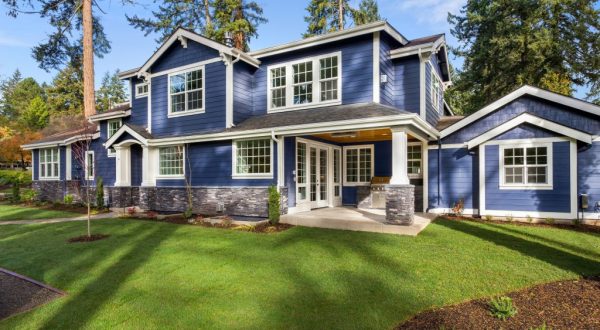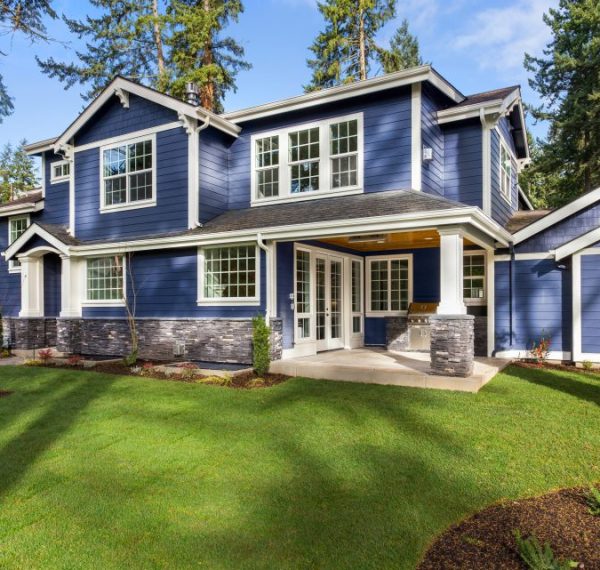If you have been thinking of selling your home and dreading all the costly repairs that need to be done before you sell, you may be wondering if it makes sense to just sell your home “AS-IS”.
This is one of the most frequent questions or concerns I get from sellers, and the answer depends on several variables.
For those of you stuck in this predicament, let’s go over the questions you should be asking yourself to determine the best course of action for you.
Should I fix up my house or sell AS-IS?
It’s a no-brainer that if you fix up your home to sell you’re likely to benefit from a significantly higher price and a quicker sale. However, there may be times where making updates or repairs may not be the best option for selling your home and bringing you the return you are expecting.
Before you get started painting and hiring a handyman for those repairs, here are some questions you should ask yourself to understand whether selling “AS-IS” or repairing is the right decision.
- What’s the current market value of your home?
- Is your home’s condition so far gone that you would have to spend tens of thousands, or a hundred thousand, to get the home in move-in condition?
- Are there foundation problems, or serious layout issues that would hamper the sale?
- Are there unpermitted additions that make up a substantial portion of the home?
- What are the buyers in your area looking for in a home?
- How is the current market in your neighborhood and general area?
- Are there many homes for sale, and how do they compare to your home?
Selling “AS-IS”
If you absolutely must, you can sell your home in its current “AS-IS” condition without making any repairs or updates.
You should still have seller’s inspections done, fill out disclosures, have professional photos taken, and do your best to declutter and have the home show well.
Since the market is made up of different buyers with different needs. You may attract buyers out there who are looking for a good home they can put their own personal touch on.
Most of the time, it’s investors looking for home deals that they can get at a reasonable price and flip it for a profit. If you’re like me, you want to avoid selling to these buyers because they are making the profit and not you.
As a home seller, keep in mind that the majority of buyers in Santa Clara are not looking for project homes. That doesn’t mean that you will be forced to sell to an investor’s lowball offer.
There are some steps to take to determine if selling “AS-IS” is a good move in your particular situation.
Step 1. Get a Professional Market Analysis of Your home
Your first step is to get a benchmark of your home’s value.
You’ll want to understand what homes like yours in your neighborhood or area are selling for and how your home compares. This will give you a low, middle, and high-end price range.
If there is a substantial difference, between those values, you may want to consider what it would take to get your home to the higher end of the market.
The best way to obtain your home’s value is from a Realtor who specializes in your area. Sites like Zillow and Redfin offer automated estimates that can be accurate, but just as often they can be very misleading.
Step 2. Understand Your Home’s Value
Now that you have some pricing information of your home, you need to understand your home’s value.
I am not referring to price here, but what is it about your home that buyers value?
Is your home in a very sought-after neighborhood? Does it have a unique location or lot? Are there other factors about your home that make it desirable and cannot be easily found in other homes?
If buyers are motivated to buy your home for reasons beyond just its condition, then spending a lot of money to fix it up may not be necessary.
This is where understanding your market and how your home fits are critical to making the right decision when it comes to how you will sell your home.
Step 3. Understand the Current Market
Like any good or service, the current condition of the market will determine the value and demand for your home.
When selling in a strong seller’s market the odds are in your favor that your home will stand out due to low inventory or lack of options for buyers. The stronger the seller’s market, the less you will have to do much to make your home stand out.
Conversely, in a weak or slow market where the inventory of homes is high, your home will have to be special to get the attention of buyers and motivate them to make an offer.
It’s key not only to understanding the current market, but understanding your home’s value and how it fares in the current market.
Step 4. Understand What Improvements You Need to Make to Net the Highest Return
To get a great price for your home it needs to stand out.
If your home is already a stand-out home, due to its location or other factors mentioned in Step 2. then you are almost always guaranteed to get a great price for your home in any market.
However, most homes are average at best and don’t offer anything substantially better than the typical home on the market. In this case, a home is not likely to be met with much enthusiasm when it hits the market.
In a slower or even market, a home like this may have trouble selling. If this situation, a seller usually better off improving the home in order to make it stand out and improve its chances of selling faster and higher.
Your home is competing with other homes for buyers’ attention, and therefore it’s important to understand what buyers are ideally looking for and what your competition is offering.
Your Realtor should know the market and be able to guide you on the repairs needed to make your home stand out. It’s important to understand the expected costs and time needed to complete the repairs.
Our Complete Selling Solution is specifically designed to handle everything a seller needs to get their home ready for the market and achieve the highest return possible.
Step 5. Cost and Time of Construction
Home construction is an expensive and time-consuming process.
There is always some risk associated with home improvements. The more involved the project the higher the risk that additional costs or delays will be incurred.
The risks can be anything from problems that arise from construction to the market shifting during construction.
Therefore when assessing whether or not to make improvements to your home prior to selling you should assess the risk.
Remember the larger the project the higher the risk. If the improvements are too costly and time-consuming you may feel that the risks outweigh any potential gain that can be realized.
Smaller projects with lower costs, may not bring the big selling price but they may net you just as much and not expose you to too much risk.
Step 6. Understand Your Costs and Net Proceeds
As you are determining the costs and timeframes it’s important to compare those costs with the home value figures you received from Step 1. in order to determine your Return on Investment (ROI).
If the ROI is substantial then it may make sense to go forward with the improvements. If not, it may not be worth the risk and out-of-pocket costs.
Another thing to note are the selling costs. As your home’s sale price goes up so do your selling costs, mainly commissions. However, there are other costs that can significantly impact your return, and those are capital gains.
Capital gains are worth mentioning here because they increase dramatically as you realize a higher gain. At some point, you may reach the top capital gains rate, where every dollar you realize in profit will only return you 53 cents.
If you have made a large gain on the sale of your property, chances are you may need to pay capital gains. The highest combined (State and Federal) capital gains rate for someone living in California is around 47%.
Being at the highest capital gains rate may put a damper on your desire to spend money on improvements when you are making roughly 50 cents for each dollar of your return.
For more information on how to determine your gain check out our post How to Calculate Capital Gains When Selling.
* Total commission 4% including buyer side agent commission of 2.5%, offer varies by value of home.
Step 7. Timing and Season of the Market
Timing is everything, and it’s the biggest factor for a seller when selling a home.
Unfortunately timing the market on the sale of your home is difficult and not something you can rely on.
Although there is no exact way to time the market, as a seller you should be aware of the different seasonal shifts that can affect the local real estate market. These shifts generally happen in late spring-early summer and late fall-early winter.
As a seller who is faced with the option of fixing or repairing their home prior to selling, you should consider when your home will be actually be listed and what that market may look like.
As we discussed home improvements take time, and depending on those improvements we could be talking weeks or months before they are completed.
If you are on the fence on what course of action you want to take, think about what time of year your home will hit the market when the home will be ready.
As a general rule, the local real estate market can slow down in the summer when home inventory starts to climb and again tighten up in the early winter just before the holidays.
As a seller, you will want to try and avoid the Summer months and shoot for Winter or early Spring.
For more information about this read our post on The Best Time to Sell a Home in Santa Clara.
Timing isn’t a sure thing and all markets don’t follow this pattern, but since we don’t have a crystal ball it would be wise to do what you can to minimize risk.
The last thing you want is to is go through the trouble of spending a good amount of money on a project, just to have the market shift and sell at a price your could have sold without all that trouble.
What repairs should you make to the home before selling?
Now that you know what steps to take to help you make an informed decision on selling your home, let’s see what sort of repairs we are talking about.
There are many variables to consider in regards to the different styles of homes and what buyers’ tastes are in your specific market.
Here is a general list that would apply to almost every selling situation to get a home into move-in ready condition:
- Pay attention to flooring and walls. Upgrading flooring and paint massively changes the look and feel of a home
- Repairing any holes or cracks in the walls and ceilings
- Replacing any broken appliances or HVAC system
- Fixing leaky plumbing
- Getting electrical or un-permitted add-ons to code if possible
- Fixing any safety issues
- Replacing any broken window or glass
- Foundation problems can scare buyers away- look into what it would take to repair any issues with your foundation
- Old kitchen and bathrooms with dirty sinks or damaged counters or floors will need some attention
- Dirty or outdated fixtures and wall plugs/sockets
Conclusion
Choosing to repair your home or sell as-is is not always cut and dry and therefore your best move is to consult with a local real estate professional.
A real estate agent will help you navigate these steps, limit your risk, and help you in determining the right course of action.
Another advantage is that an active real estate professional in your area should know the current market conditions and what aspects of your specific home will add value without having you overspend and over improve with little return.
Lastly, a proven real estate agent should have a team of professionals that are experienced, cost-effective, reliable and will handle all of your home’s needs. Knowing this before you dive in will save not only your time, but also your money.
If you feel your home could benefit from some renovation before you sell, but you’re unsure of where to start- call me, your Santa Clara real estate specialist, for a free consultation. Don’t worry if you don’t have the time, money, and resources to get it done. Our service is designed to get it all done for you and we can even defer all the costs until the close of escrow. Call us today 408.582.3272
Contact Me Today
Have a question? Interested in setting an appointment to talk about your real estate plans? Contact me today.









